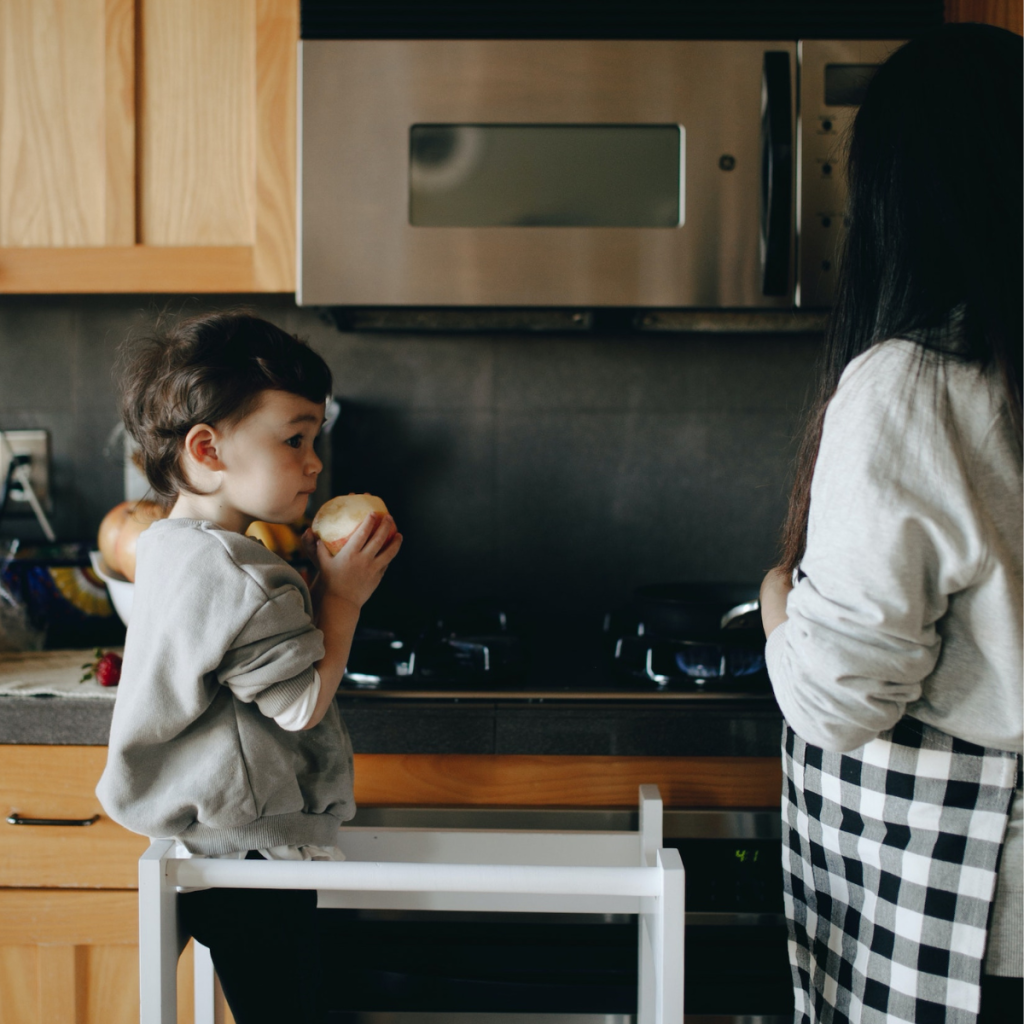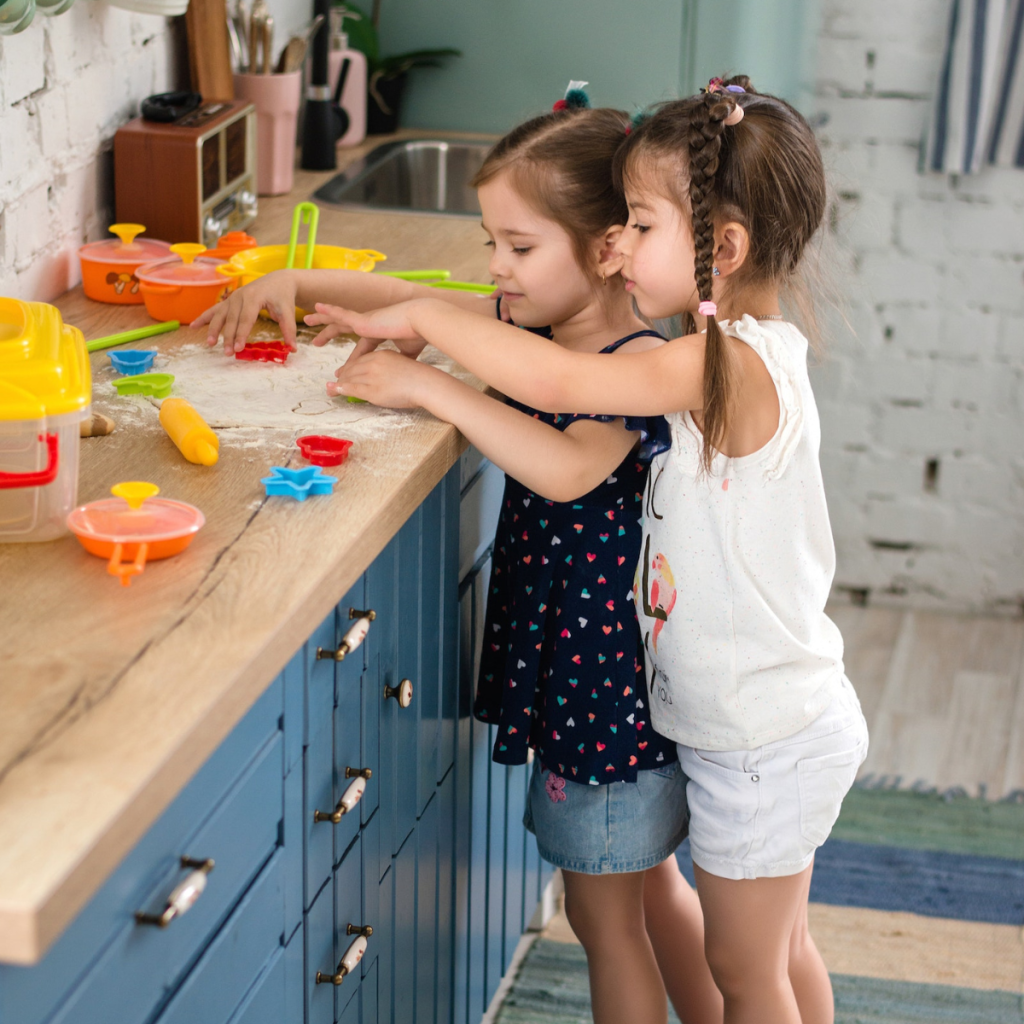Discover effective strategies and tips for teaching cooking to young children aged 5-6 years old.
How to Teach Cooking to a 5-6 Year Old Child
Teaching your little one how to cook can be both a fun and educational experience! Not only will they learn a valuable life skill, but they’ll also develop their creativity and independence in the kitchen. So, let’s dive into the wonderful world of teaching cooking to a 5-6 year old child!
Understanding the Basics of Cooking for Children
Before we get started, it’s important to understand why teaching cooking skills early on is so crucial. By introducing your child to the art of cooking at a young age, you are providing them with a solid foundation for a healthy relationship with food. Cooking allows them to explore new flavors, understand the importance of nutrition, and fosters a sense of accomplishment as they create something with their own hands.

The Importance of Teaching Cooking Skills Early
When kids learn to cook at an early age, they become more adventurous eaters. By involving them in the cooking process, they get to see the ingredients that go into their meals, making them more willing to try new things. Plus, cooking teaches valuable skills like following instructions, measuring, and problem-solving – all of which will benefit them throughout their lives.
Moreover, teaching cooking skills early can have long-term positive effects on children’s health. Research has shown that children who are involved in meal preparation are more likely to develop healthy eating habits and make better food choices as they grow up. By understanding how food is prepared and the importance of nutrition, they can make informed decisions about what they eat, leading to a healthier lifestyle.
Additionally, cooking with children provides an opportunity for quality bonding time. As you work together in the kitchen, you can engage in meaningful conversations, share stories, and create lasting memories. This shared experience can strengthen your relationship and build a sense of trust and teamwork.
Safety Measures in the Kitchen for Kids
Of course, safety always comes first in the kitchen, especially when it comes to little chefs. Make sure to establish clear safety rules, such as using oven mitts, staying away from sharp objects, and always having an adult present. By teaching them the importance of kitchen safety, you can ensure that cooking remains a fun and risk-free activity.
Furthermore, teaching children about kitchen safety goes beyond just preventing accidents. It also helps them develop essential life skills, such as responsibility and awareness. By understanding the potential hazards in the kitchen and how to avoid them, children learn to be cautious and take necessary precautions in other areas of their lives as well.
Moreover, involving children in safety discussions and decision-making empowers them to become more independent and confident in their abilities. As they learn to identify potential risks and take appropriate actions, they gain a sense of control and self-assurance, which can extend to various aspects of their lives.
In conclusion, teaching cooking skills early on not only benefits children in terms of their eating habits and nutrition knowledge but also promotes bonding, responsibility, and independence. By providing a safe and supportive environment in the kitchen, you can nurture their curiosity, creativity, and love for food, setting them up for a lifetime of culinary enjoyment and well-being.
Preparing to Teach Your Child to Cook
Now that you understand the importance of teaching cooking skills to your child, it’s time to prepare for their culinary journey. There are a few key steps you can take to set them up for success!
But before we dive into the details, let’s take a moment to appreciate the beauty of cooking. Cooking is not just about preparing food; it’s an art form that allows us to express our creativity and nourish our bodies. By teaching your child to cook, you are opening up a world of possibilities for them.
Now, let’s explore the first step in preparing your child to become a master chef!
Choosing Age-Appropriate Recipes
Start by selecting recipes that are suitable for their age group. Look for simple dishes with minimal steps and ingredients. This will help them build confidence in the kitchen and make the cooking process more enjoyable.
But don’t limit yourself to basic recipes! You can also introduce your child to different cuisines from around the world. Explore the flavors of Italy with a homemade pizza or embark on a culinary adventure to Mexico with some delicious tacos. By exposing your child to diverse recipes, you are not only expanding their cooking skills but also broadening their cultural horizons.
Remember, cooking is not just about following a recipe; it’s about experimenting and adding your own personal touch. Encourage your child to get creative in the kitchen by allowing them to modify recipes according to their taste preferences. Who knows, they might discover a unique flavor combination that becomes their signature dish!
Gathering Child-Friendly Cooking Tools
Invest in some kid-friendly cooking tools to make their experience even more exciting. Child-sized utensils, colorful aprons, and fun-shaped cookie cutters will instantly spark their interest and make them feel like real chefs!
But the fun doesn’t stop there! You can also involve your child in the process of choosing their own cooking tools. Take them to a kitchen supply store and let them pick out their favorite utensils and gadgets. This not only empowers them but also instills a sense of ownership and responsibility in their cooking journey.
Additionally, consider creating a dedicated cooking space for your child. Set up a small kitchen station with their own pots, pans, and ingredients. This will give them a sense of independence and make them feel like they have their own little restaurant right at home.
Furthermore, don’t forget to emphasize the importance of kitchen safety. Teach your child about proper handling of knives, hot surfaces, and electrical appliances. By instilling good safety practices from the beginning, you are ensuring that they can enjoy their culinary adventures without any accidents.
So, now that you have a better understanding of how to prepare your child for their cooking journey, it’s time to roll up your sleeves and embark on this exciting culinary adventure together!
Making Cooking Fun and Educational
Now, let’s dive into the heart of it all – making cooking a delightful and educational experience for your child!
Cooking with your child is not only a great way to spend quality time together, but it also provides numerous opportunities for learning and growth. By incorporating educational activities into your cooking sessions, you can help your child develop important skills while having fun in the kitchen.

Incorporating Learning into Cooking
Cooking is an excellent opportunity to incorporate various educational activities. One way to make cooking educational is by teaching your child about different food groups. As you prepare a meal, you can explain the importance of eating a balanced diet and discuss the different nutrients found in each food group. This will not only help them understand the importance of healthy eating but also expand their knowledge of nutrition.
Math concepts can also be explored through cooking. From measuring ingredients to adjusting recipe quantities, there are plenty of opportunities to introduce your child to basic math skills. You can ask them to measure out ingredients using measuring cups and spoons, and discuss fractions and ratios as you work together. This hands-on approach to math will make it more enjoyable and practical for your child.
Furthermore, cooking can be a great way to introduce your child to science. You can explain the chemical reactions that occur when ingredients are mixed or heated, and discuss concepts such as emulsification, fermentation, or caramelization. By linking scientific principles to real-life cooking experiences, you can spark your child’s curiosity and foster a love for learning.
Creating a Fun Cooking Environment
A little bit of fun can go a long way in the kitchen! To create a fun cooking environment, you can start by playing your child’s favorite music in the background. Music has been shown to enhance mood and create a positive atmosphere, making the cooking experience more enjoyable for both of you.
Another way to add excitement to your cooking sessions is by wearing silly chef hats or aprons. Let your child choose their own chef outfit and encourage them to embrace their inner chef. This simple act can make them feel special and create a sense of anticipation and adventure as they step into the kitchen.
Additionally, you can have themed cooking sessions to make the experience even more memorable. Choose a theme based on your child’s interests, such as a superhero-themed meal or a princess tea party. Plan the menu accordingly and decorate the kitchen to match the theme. This will not only make cooking more fun but also encourage your child’s creativity and imagination.
By creating a joyful atmosphere in the kitchen, you’ll make memories that will last a lifetime. Cooking together can become a cherished tradition and a bonding experience that strengthens your relationship with your child. So, let your creativity flow and make cooking a fun and educational adventure for both of you!
Step-by-Step Guide to Teaching Cooking
Alright, it’s time to dive into the nitty-gritty of teaching your child to cook. Here’s a step-by-step guide to help you along the way!
Introducing Basic Cooking Concepts
Start by introducing your little one to basic cooking concepts. Show them how to properly wash fruits and vegetables, explain the purpose of different cooking utensils, and demonstrate basic knife skills (under supervision, of course!). These foundational skills will pave the way for more advanced cooking techniques in the future.
Guiding Your Child Through a Recipe
Once they have a grasp of the basics, it’s time to dive into a recipe! Choose something that aligns with their interests and skill level. Guide them through each step, encouraging them to read the recipe carefully, measure ingredients precisely, and execute each technique with confidence. Remember, patience is key!
Dealing with Challenges in Teaching Cooking
Teaching cooking isn’t always smooth sailing. However, with a little bit of creativity and patience, you can overcome any challenges that may arise!
Overcoming Fear of Mess and Mistakes
One of the biggest obstacles you may encounter when teaching cooking is the fear of mess and mistakes. Let your child know that it’s okay to make a mess and that mistakes are part of the learning process. Emphasize the importance of cleaning up after cooking and show them how to fix any mishaps along the way.
Handling Fussy Eaters
If you have a fussy eater on your hands, don’t despair! Cooking together can actually help expand their palate. Encourage them to taste each ingredient as you cook and let them have a say in which flavors they’d like to incorporate. By involving them in the decision-making process, you may just discover a newfound love for veggies!
In conclusion, teaching cooking to a 5-6 year old child is a fantastic way to foster their love for food while nurturing their creativity and independence. By understanding the basics, preparing ahead, making it fun and educational, providing a step-by-step guide, and addressing any challenges that may arise, you’ll set your little chef up for success in the kitchen – and beyond!



